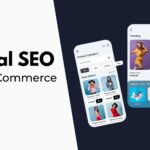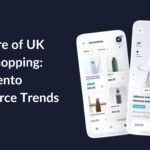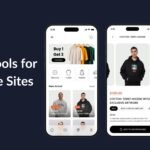- By Kiwi Commerce
- 07 May, 2025
- Marketing
The Power of Personalisation in Email Marketing: How to Get It Right
Turn generic emails into tailored experiences that convert
In 2025, customers don’t just prefer personalisation — they expect it. With inboxes flooded by daily promotions, updates, and newsletters, a one-size-fits-all approach simply doesn’t cut it. Whether you’re running an eCommerce store or a service-based business, personalised email marketing is no longer optional — it’s essential.
At Kiwi Commerce, we help businesses turn email into a high-performing, relationship-building channel using strategic, data-led personalisation. In this blog, we’ll explore what personalisation really means, why it drives better results, and exactly how to get it right.
Why Personalisation is Crucial in 2025
According to recent studies:
- 72% of consumers only engage with messages that are customised to their interests.
- Personalised emails generate 6x higher transaction rates than generic messages.
- 80% of consumers are more likely to buy when brands offer personalised experiences.
In short: if you’re not personalising, you’re missing out on clicks, conversions, and customer loyalty.
But personalisation is about more than just adding someone’s first name to a subject line. Done right, it’s about delivering the right message, to the right person, at the right time — with the right context.
The Psychology Behind Personalisation
Personalised content taps into the human need to feel seen, understood, and valued. It creates familiarity and relevance — two key ingredients for engagement.
- Relevance = attention. When content speaks directly to a person’s needs, pain points or goals, they’re more likely to engage.
- Familiarity = trust. When someone feels like you understand them, they’re more likely to convert — and come back.
That’s the true power of personalisation in email marketing: it helps brands become not just visible, but valuable.
Key Types of Email Personalisation
break down the different ways you can personalise your email marketing beyond “Hi John”:
1. Behaviour-Based Personalisation
Use the actions users take on your site to trigger automated, relevant messages.
Examples:
- A customer who views a product but doesn’t buy → Send them a product-focused follow-up.
- A user downloads your pricing guide → Send them a tailored service walkthrough or a client success story.
- A customer buys a skincare product → Recommend complementary products or a replenishment reminder.
This kind of personalisation shows you’re paying attention — not just broadcasting.
2. Segmentation-Based Personalisation
Group your audience by shared characteristics to send targeted campaigns.
Segmentation options:
- Purchase frequency (first-time buyer vs VIP)
- Gender / age / location
- Product preferences
- Email engagement levels
- Business size or industry (for B2B)
For eCommerce:
Send seasonal offers to women’s apparel customers only — or create loyalty rewards for high spenders.
For B2B:
Segment by role (e.g. marketing manager vs CTO) and adjust content to match their pain points and decision-making style.
3. Lifecycle Personalisation
Match your email content with where the customer is in their journey.
Stages to consider:
- New subscriber (welcome series)
- Cold lead (re-engagement campaign)
- Ready to buy (nudge emails)
- Recent customer (onboarding + upsell)
- Long-time customer (loyalty campaigns)
Each stage requires a different tone, offer, and CTA. Lifecycle automation ensures people hear from you when it matters most.
4. Real-Time Personalisation
Use real-time data to trigger messages based on live behaviour.
Examples:
- Weather-based offers (e.g. “It’s raining in Manchester – perfect time for waterproofs!”)
- Stock-based urgency (e.g. “Only 3 left in your size”)
- Price drops or back-in-stock alerts
- Browse abandonment sequences
Real-time triggers feel personal because they are — and they significantly boost open and click-through rates.
Tools to Power Smart Personalisation
To personalise at scale, you need the right tools. Here are a few we recommend at Kiwi Commerce:
| Tool | Best For |
| Klaviyo | eCommerce email automation & segmentation |
| HubSpot | B2B lead nurturing, CRM integration |
| Mailchimp | Starter automation and newsletters |
| ActiveCampaign | Behaviour-based automation workflows |
| Dotdigital | Cross-channel marketing for larger retailers |
| Google Tag Manager | Tracking user actions for behavioural emails |
We help our clients integrate and optimise these platforms based on their size, goals, and tech stack.
📈 How Personalised Emails Drive ROI
Personalised email marketing leads to better results because it:
- Reduces unsubscribe rates by improving relevance
- Boosts engagement (higher open and click-through rates)
- Improves conversion by speaking to specific pain points
- Enhances customer retention by building brand affinity
- Increases average order value (AOV) through smart upselling
Example:
Instead of sending a blanket “10% off” email, send:
- A VIP customer a loyalty reward
- A window shopper a limited-time offer on what they viewed
- A repeat buyer an early access invite to your next launch
Same effort. Better return.
🔍 Mistakes to Avoid with Personalisation
Even good personalisation can go wrong. Here’s what not to do:
- Wrong or missing personal details (“Hi [First Name]”)
- Overly creepy targeting (e.g. “We saw you looked at this 5 times…”)
- Inconsistent data across platforms
- Over-segmentation without scale
- No testing or refinement
Personalisation should feel helpful, not invasive. Always test, review, and adjust your strategy based on actual user feedback and behaviour.
How Kiwi Commerce Helps You Personalise with Purpose
We go beyond the tech — we help you:
- Audit your current email performance
- Create data-backed customer segments
- Build behaviour-driven automations
- Write email copy that speaks to each audience
- Test and optimise campaigns for long-term growth
Whether you’re just starting out or need to overhaul your existing flows, we can create an email strategy that feels personal — and performs commercially.
Final Thoughts
In today’s inbox, relevance wins. If your emails feel generic, they’ll be ignored. But if they feel personal, timely, and useful — they’ll get opened, clicked, and remembered.
With the right strategy and tools, personalisation becomes more than just a marketing trick — it becomes a trust-building growth driver.
Ready to personalise your email marketing for better results?
Let’s make your emails smarter, sharper, and more profitable.
👉 Get in touch with the Kiwi Commerce team



